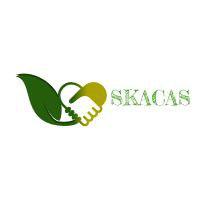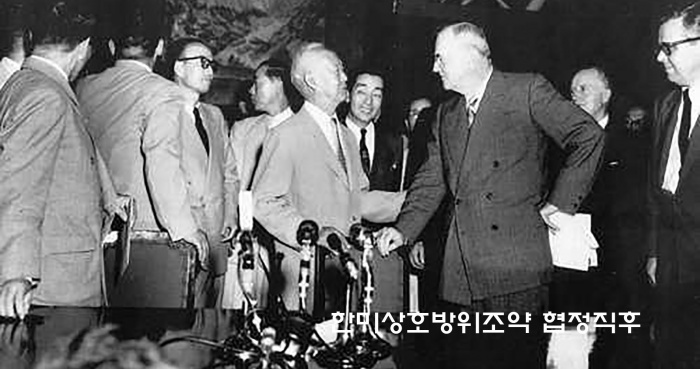아직 한국신문에 보도 안된 기사.
아래는 방금 워싱턴포스트에 난 따끈따끈한 기사입니다.
열당분들 영어실력이 워낙 출중해서 번역이 필요없을것 같음.
(하기사 바닥을 기는 내 영어실력 가지고는 한바람님 만큼
번역할 자신도 없지만..)
---------
N. Korea bans entry of S. Korean workers to joint industrial park near border
Video: Seoul says North Korea is refusing to allow South Korean workers to enter a jointly-run factory park just across the border in North Korea.
165CommentsShareTweetAddKindle
EmailPrintMoreBy Chico Harlan, Apr 03, 2013 11:32 AM EDT
The Washington Post Updated: Wednesday, April 3, 7:32 AM
SEOUL — North Korea on Wednesday banned South Korean workers from entering a joint industrial complex near the demilitarized zone, officials in Seoul said, jeopardizing a project that provides the only daily contact between the two Koreas amid an escalating threat of conflict on the peninsula.
The North did not say how long the entry ban would last. It allowed South Korean workers who had been at the facility to return home if they wished.
(Adrian Bradshaw/ EPA ) - North Korean workers produce clothes in a South Korean textile factory in the North Korean industrial complex Kaesong, May 31, 2007. Amid heightened tensions between North and South Korea, North Korea threatened to close the park.
Gallery
Is North Korea serious about war?: Following a threat to launch a nuclear attack on the United States, North Korea’s state news arm released dozens of photos that show military drills.
.The move is significant because the Kaesong Industrial Complex — located six miles north of the heavily fortified border — has long stood as a near-untouchable symbol of cooperation, operating even during a pair of fatal 2010 attacks launched by the North on the South.
North Korea has tried in recent weeks to ratchet up tensions on the peninsula, nullifying an armistice agreement, declaring a “state of war” and vowing to produce new fissile material for its nuclear weapons. But the Kaesong move marks an even more forceful step, showing the North’s willingness to meddle with — and potentially lose — a cash cow that generates between $20 million and $100 million annually for the authoritarian government, according to estimates from economists.
Experts say the North is likely reluctant to close the complex and is instead hoping to spark alarm from its richer neighbor, whose people typically view Pyongyang as a worrisome but far-removed threat — one unlikely to upend their own lives.
But the North’s decision to ban entry presents an immediate and “serious” obstacle to the roughly 120 South Korean businesses that operate at Kaesong, a South Korean government spokesman said. Separately, South Korea’s defense minister said Seoul would consider military action if the safety of South Korean workers still at the complex was put at risk.
“I don’t think [the North’s leaders] are going to close down Kaesong,” said Choi Jin-wook, acting president of the government-funded Korea Institute for National Unification, based in Seoul. “They are just trying to shock the South Korean people. They are saying, ‘Okay, now we are going to directly affect your life, your friends’ lives, your sons’ and fathers’ lives.’ ”
The North banned entry to Kaesong at least once before, for a matter of days in 2009 during joint military exercises between the United States and South Korea. But officials in Seoul and Washington say the situation on the peninsula is now more volatile, with the North controlled by a relatively new leader, Kim Jong Un, and the South promising an immediate military counterstrike if provoked.
Kaesong, which opened in 2004, is the legacy of a far calmer period, when back-to-back liberal governments in Seoul thought economic engagement would open the North to become more affluent and peaceful.
The complex is a bubble for capitalism, where South Korean firms — lured by tax breaks and low-interest government loans — use North Korean laborers who earn between $2 and $3 per day. But the facility has proven only half-successful, never becoming the transformative model for broader market-economy reforms that some South Korean officials once hoped for. The North Korean government takes back a bulk of the wages earned by its 50,000 workers.
열당분들 영어실력이 워낙 출중해서 번역이 필요없을것 같음.
(하기사 바닥을 기는 내 영어실력 가지고는 한바람님 만큼
번역할 자신도 없지만..)
---------
N. Korea bans entry of S. Korean workers to joint industrial park near border
Video: Seoul says North Korea is refusing to allow South Korean workers to enter a jointly-run factory park just across the border in North Korea.
165CommentsShareTweetAddKindle
EmailPrintMoreBy Chico Harlan, Apr 03, 2013 11:32 AM EDT
The Washington Post Updated: Wednesday, April 3, 7:32 AM
SEOUL — North Korea on Wednesday banned South Korean workers from entering a joint industrial complex near the demilitarized zone, officials in Seoul said, jeopardizing a project that provides the only daily contact between the two Koreas amid an escalating threat of conflict on the peninsula.
The North did not say how long the entry ban would last. It allowed South Korean workers who had been at the facility to return home if they wished.
(Adrian Bradshaw/ EPA ) - North Korean workers produce clothes in a South Korean textile factory in the North Korean industrial complex Kaesong, May 31, 2007. Amid heightened tensions between North and South Korea, North Korea threatened to close the park.
Gallery
Is North Korea serious about war?: Following a threat to launch a nuclear attack on the United States, North Korea’s state news arm released dozens of photos that show military drills.
.The move is significant because the Kaesong Industrial Complex — located six miles north of the heavily fortified border — has long stood as a near-untouchable symbol of cooperation, operating even during a pair of fatal 2010 attacks launched by the North on the South.
North Korea has tried in recent weeks to ratchet up tensions on the peninsula, nullifying an armistice agreement, declaring a “state of war” and vowing to produce new fissile material for its nuclear weapons. But the Kaesong move marks an even more forceful step, showing the North’s willingness to meddle with — and potentially lose — a cash cow that generates between $20 million and $100 million annually for the authoritarian government, according to estimates from economists.
Experts say the North is likely reluctant to close the complex and is instead hoping to spark alarm from its richer neighbor, whose people typically view Pyongyang as a worrisome but far-removed threat — one unlikely to upend their own lives.
But the North’s decision to ban entry presents an immediate and “serious” obstacle to the roughly 120 South Korean businesses that operate at Kaesong, a South Korean government spokesman said. Separately, South Korea’s defense minister said Seoul would consider military action if the safety of South Korean workers still at the complex was put at risk.
“I don’t think [the North’s leaders] are going to close down Kaesong,” said Choi Jin-wook, acting president of the government-funded Korea Institute for National Unification, based in Seoul. “They are just trying to shock the South Korean people. They are saying, ‘Okay, now we are going to directly affect your life, your friends’ lives, your sons’ and fathers’ lives.’ ”
The North banned entry to Kaesong at least once before, for a matter of days in 2009 during joint military exercises between the United States and South Korea. But officials in Seoul and Washington say the situation on the peninsula is now more volatile, with the North controlled by a relatively new leader, Kim Jong Un, and the South promising an immediate military counterstrike if provoked.
Kaesong, which opened in 2004, is the legacy of a far calmer period, when back-to-back liberal governments in Seoul thought economic engagement would open the North to become more affluent and peaceful.
The complex is a bubble for capitalism, where South Korean firms — lured by tax breaks and low-interest government loans — use North Korean laborers who earn between $2 and $3 per day. But the facility has proven only half-successful, never becoming the transformative model for broader market-economy reforms that some South Korean officials once hoped for. The North Korean government takes back a bulk of the wages earned by its 50,000 workers.

좋아요 0
태그
DISCLAIMER
이곳에 게시된 글들은 에이전트 혹은 사용자가 자유롭게 올린 게시물입니다. 커뮤니티 내용을 확인하고 참여에 따른 법적, 경제적, 기타 문제의 책임은 본인에게 있습니다.
케이타운 1번가는 해당 컨텐츠에 대해 어떠한 의견이나 대표성을 가지지 않으며, 커뮤니티 서비스에 게재된 정보에 의해 입은 손해나 피해에 대하여 어떠한 책임도 지지 않습니다.




 Ktown스토리
Ktown스토리 케이톡
케이톡
















